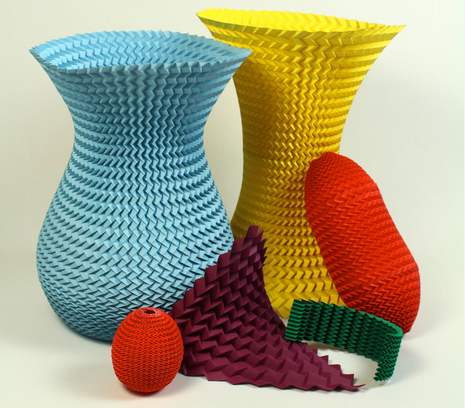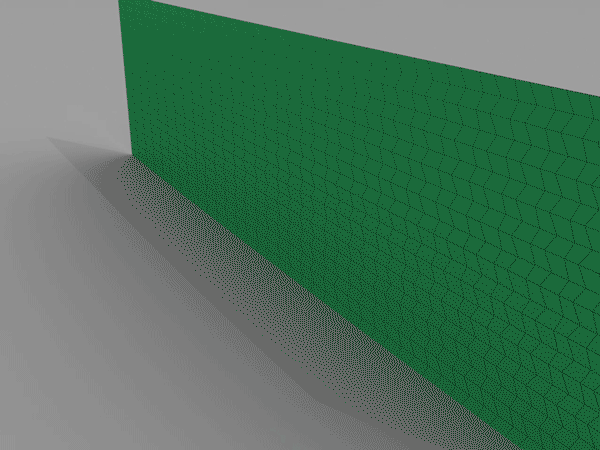How to make almost any shape out of a flat sheet of paper
January 26, 2016

Mahadevan and his team have characterized a fundamental origami fold, or tessellation, that could be used as a building block to create almost any three-dimensional shape, as seen above (credit: Mahadevan Lab/Harvard SEAS)
Harvard scientist L. Mahadevan and his team have devised a way to make virtually any shape out of a flat sheet of paper, using a fundamental origami or tessellation fold.
The folding pattern, known as the Miura-ori, is a periodic way to tile the plane using the simplest mountain-valley fold in origami. It was used as a decorative item in clothing at least as long ago as the 15th century. A folded Miura can be packed into a flat, compact shape and unfolded in one continuous motion, making it ideal for packing rigid structures like solar panels. It also occurs in nature in a variety of situations, such as in insect wings and certain leaves.
Mahadevan suggests that this simple folding pattern could serve as a template for more complicated shapes, such as space-bound payloads, surgical stents that can be packed flat and pop-up into three-dimensional structures once inside the body, or dining room tables that can lean flat against the wall until they are ready to be used.
To explore the potential of the tessellation, the team developed an algorithm that can create certain shapes using the Miura-ori fold, repeated with small variations. Given the specifications of the target shape, the program lays out the folds needed to create the design, which can then be laser printed for folding.
The program takes into account several factors, including the stiffness of the folded material and the trade-off between the accuracy of the pattern and the effort associated with creating finer folds — an important characterization because, as of now, these shapes are all folded by hand.

This spiral folds rigidly from flat pattern through the target surface and onto the flat-folded plane (credit: Mahadevan Lab)
“Essentially, we would like to be able to tailor any shape by using an appropriate folding pattern,” said Mahadevan. “Starting with the basic mountain-valley fold, our algorithm determines how to vary it by gently tweaking it from one location to the other to make a vase, a hat, a saddle, or to stitch them together to make more and more complex structures.”
“The really exciting thing about this fold is it is completely scalable.You can do this with graphene, which is one atom thick, or you can do it on the architectural scale.”
Mahadevan is the Lola England de Valpine Professor of Applied Mathematics, Organismic and Evolutionary Biology, and Physics at the Harvard John A. Paulson School of Engineering and Applied Sciences (SEAS). He is also a core faculty member of the Wyss Institute for Biologically Inspired Engineering, and member of the Kavli Institute for Bionano Science and Technology, at Harvard University.
The research is published in Nature Materials.
Abstract of Programming curvature using origami tessellations
Origami describes rules for creating folded structures from patterns on a flat sheet, but does not prescribe how patterns can be designed to fit target shapes. Here, starting from the simplest periodic origami pattern that yields one-degree-of-freedom collapsible structures—we show that scale-independent elementary geometric constructions and constrained optimization algorithms can be used to determine spatially modulated patterns that yield approximations to given surfaces of constant or varying curvature. Paper models confirm the feasibility of our calculations. We also assess the difficulty of realizing these geometric structures by quantifying the energetic barrier that separates the metastable flat and folded states. Moreover, we characterize the trade-off between the accuracy to which the pattern conforms to the target surface, and the effort associated with creating finer folds. Our approach enables the tailoring of origami patterns to drape complex surfaces independent of absolute scale, as well as the quantification of the energetic and material cost of doing so.